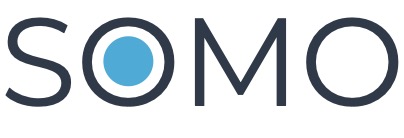Citizen Generated Data (CGD)
1. Identifying and Mapping Key Stakeholders
a. Understanding Key Stakeholders
- Definition: Stakeholders are individuals or groups who have an interest in or are affected by the outcomes of a project. They can include community members, local organizations, government agencies, funders, and advocacy groups.
- Types of Stakeholders:
- Primary Stakeholders: Directly affected by the project (e.g., beneficiaries).
- Secondary Stakeholders: Indirectly affected (e.g., local businesses).
- Key Influencers: Individuals or groups with the power to affect outcomes (e.g., local leaders, policymakers).
b. Mapping Stakeholders
- Stakeholder Mapping Process:
- Identify Stakeholders: List potential stakeholders relevant to the project.
- Analyze Interests: Determine each stakeholder's interests, needs, and potential impact on the project.
- Assess Influence and Importance: Use a matrix to classify stakeholders based on their influence and interest levels. Common classifications include:
- High Influence/High Interest: Key players to engage closely.
- High Influence/Low Interest: Keep satisfied, but not overly involved.
- Low Influence/High Interest: Keep informed and engaged.
- Low Influence/Low Interest: Monitor, but minimal engagement.
- Develop Engagement Strategies: Tailor strategies for each category to maximize effective communication and collaboration.
c. Engagement Approaches
- Inform: Share information about the project and its potential impact.
- Consult: Seek feedback and input from stakeholders.
- Involve: Engage stakeholders in decision-making processes.
- Collaborate: Partner with stakeholders to achieve common goals.
2. Communication Strategies Tailored to Different Audiences
a. Crafting Messages that Resonate
- Know Your Audience: Understand the demographics, cultural backgrounds, and specific interests of different stakeholders.
- Tailored Messaging: Customize messages to address the specific concerns and motivations of each audience segment. For example:
- For community members: Focus on personal stories and local impact.
- For funders: Highlight data, outcomes, and return on investment.
- For policymakers: Emphasize alignment with public policy and community benefits.
b. Selecting Appropriate Communication Channels
- Channel Options:
- Face-to-Face Meetings: Effective for building relationships and trust.
- Workshops and Community Meetings: Engaging platforms for discussion and feedback.
- Social Media: Great for reaching a wider audience, especially younger demographics.
- Newsletters and Emails: Useful for updates and maintaining ongoing communication.
- Reports and Infographics: Effective for summarizing data and presenting findings visually.
- Choosing the Right Channel: Consider the audience’s preferences, the message’s complexity, and the context of the communication when selecting channels.
3. Facilitating Community Meetings and Workshops
a. Planning Community Meetings
- Objectives: Clearly define the purpose of the meeting (e.g., presenting findings, gathering feedback, mobilizing action).
- Agenda: Create a structured agenda to keep discussions focused and productive.
- Logistics: Choose an accessible location and set a time that accommodates most participants. Ensure necessary materials (e.g., handouts, visual aids) are prepared in advance.
b. Facilitating Techniques
- Icebreakers: Use engaging activities at the beginning to foster a comfortable environment.
- Active Listening: Encourage participants to share their views, and listen attentively to validate their input.
- Encourage Participation: Use techniques such as small group discussions, polls, or Q&A sessions to involve everyone.
- Summarizing and Clarifying: Periodically summarize discussions to ensure understanding and to clarify any points of confusion.
c. Gathering Feedback
- Feedback Mechanisms: Implement methods for participants to provide feedback (e.g., surveys, suggestion boxes).
- Follow-Up: After the meeting, communicate how feedback will be used to influence project decisions.
Last modified: Friday, 20 September 2024, 7:21 AM


